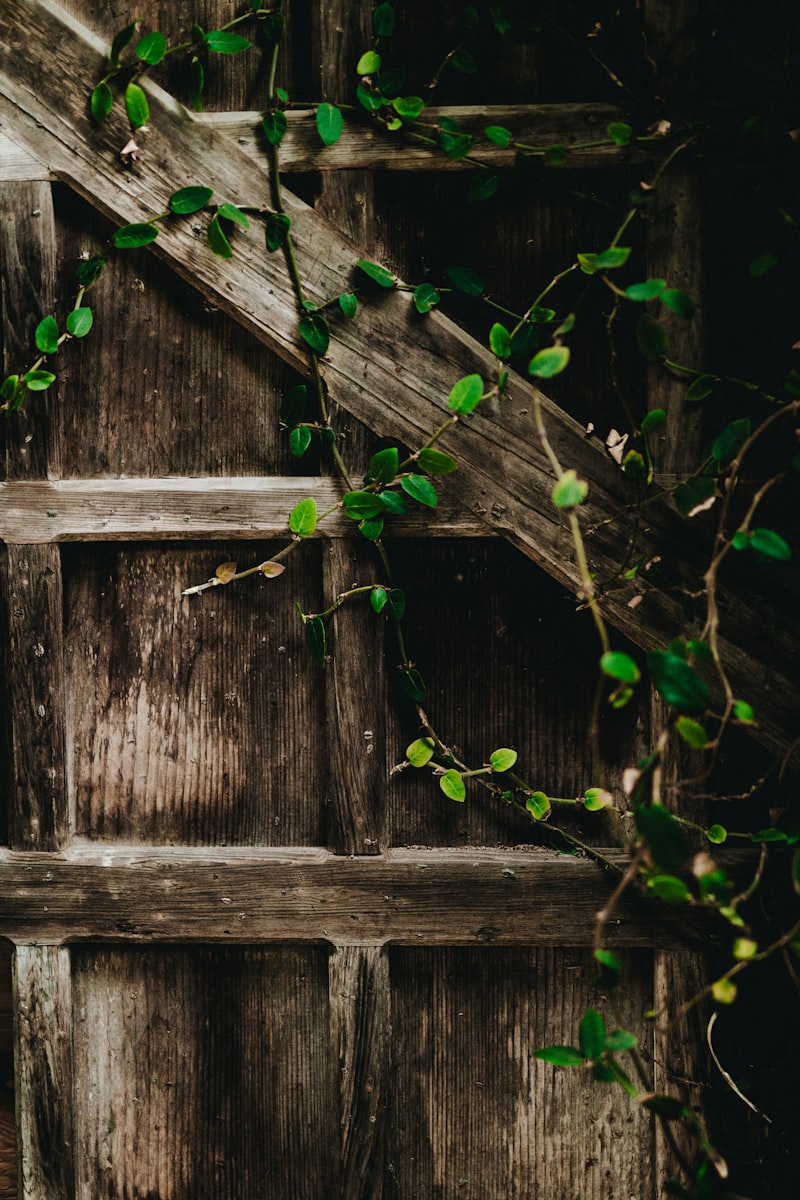Creating a wildlife-friendly garden is not just about planting a few flowers; it’s about fostering a thriving ecosystem right in your backyard. Imagine your garden buzzing with butterflies, chirping with birds, and alive with the gentle hum of bees—it’s all possible with a few thoughtful steps.
Firstly, choose native plants. These are the superheroes of your garden—they provide food and shelter that local wildlife is adapted to. Native flowers like coneflowers and milkweed attract butterflies and bees, while trees such as oak and birch offer homes for birds and insects alike.
Next, embrace diversity. Just like in a bustling city, a diverse community thrives in a diverse environment. Mix plants of varying heights, textures, and bloom times to cater to different species. This ensures there’s always something in bloom and something to eat, encouraging a steady stream of visitors.
Create habitats. Install birdhouses, bee hotels, and butterfly shelters. These cozy homes provide safe havens for wildlife to rest, breed, and raise their young. It’s like building a neighborhood where everyone has their own place to call home.
Avoid chemicals. Pesticides and herbicides can harm more than just pests—they can disrupt the delicate balance of your garden’s ecosystem. Instead, opt for natural pest control methods and let nature’s pest controllers—like ladybugs and birds—do their job.
Lastly, provide water. A simple bird bath or a shallow dish of water can be a lifesaver for thirsty critters, especially during hot summer months. Place it in a quiet corner where animals can drink and bathe without feeling exposed.
Creating Harmony: Tips for Building a Wildlife-Friendly Garden
Firstly, choose native plants. Native species are adapted to your region’s climate and soil conditions, making them attractive to local wildlife for food and shelter. Consider plants like butterfly bush, coneflowers, or milkweed, which attract butterflies and bees with their nectar-rich blooms.
Secondly, provide food sources year-round. Plant a variety of plants that produce berries, seeds, and nuts at different times of the year. This ensures that wildlife always has something to eat, whether it’s the fruits of a dogwood tree in summer or the seeds from ornamental grasses in winter.
Thirdly, create shelter and nesting spaces. Incorporate a diversity of habitats such as dense shrubs, tall grasses, and even dead trees or brush piles. These provide shelter for birds, small mammals, and beneficial insects like ladybugs and lacewings, which help control garden pests.
Fourthly, minimize pesticide use. Chemical pesticides can harm beneficial insects and disrupt the natural balance of your garden. Instead, opt for natural pest control methods like planting companion plants that repel pests or using organic pesticides sparingly and only when necessary.
Fifthly, provide water sources. Wildlife needs water for drinking and bathing, so consider installing a birdbath, a small pond, or even just a shallow dish of water. Make sure to clean and refill these regularly to prevent mosquitoes and other pests from breeding.
Lastly, embrace a messy garden. Avoid overly tidying up your garden in the fall; leave some leaf litter and fallen branches as they provide habitat for insects and small creatures during the colder months.
Invite Nature In: Steps to Constructing a Wildlife Sanctuary Garden
Creating a Wildlife Sanctuary Garden is more than just planting flowers; it’s about inviting nature into your backyard and creating a haven for local wildlife. Imagine stepping outside your door and being greeted by butterflies fluttering around, birds singing their melodies, and bees buzzing from flower to flower. It’s like having your own slice of wilderness right at home.
So, how do you go about constructing such a magical sanctuary? Here are some steps to get you started:
-
Choose Native Plants: Native plants are essential for attracting local wildlife because they provide familiar food and shelter. Research which plants are native to your region and incorporate them into your garden. Think about including a variety of flowers, shrubs, and trees to accommodate different species.
-
Create Habitat Layers: Wildlife thrives in diverse habitats. Layer your garden with different heights and textures, such as tall trees, bushes, and ground cover plants. This variety offers shelter and nesting places for birds and small mammals.
-
Provide Food and Water: Install bird feeders, bird baths, and butterfly feeders to supply food and water to your visitors. Consider planting nectar-rich flowers like lavender, coneflowers, and bee balm to attract pollinators such as butterflies and bees.
-
Avoid Chemicals: To keep your wildlife sanctuary healthy, avoid using pesticides and herbicides. These chemicals can harm insects, birds, and other wildlife that visit your garden. Instead, opt for natural pest control methods and organic fertilizers.
-
Include Natural Materials: Incorporate natural materials like rocks, logs, and fallen branches into your garden design. These elements create hiding spots for animals and add a natural aesthetic to your sanctuary.
-
Maintain Year-Round Interest: Choose plants that bloom at different times of the year to ensure your garden remains vibrant throughout the seasons. This diversity in flowering periods attracts a wider range of wildlife throughout the year.
Creating a Wildlife Sanctuary Garden is a rewarding endeavor that connects you with nature and supports local biodiversity. By following these steps, you can transform your outdoor space into a sanctuary that not only beautifies your surroundings but also provides a safe haven for wildlife to thrive.
From Birds to Butterflies: Designing Your Perfect Wildlife Garden
Imagine stepping into your backyard and being greeted by a fluttering kaleidoscope of butterflies and the melodious chirping of birds. Creating your own wildlife garden can turn this vision into reality, transforming your outdoor space into a vibrant haven for local wildlife. Whether you’re a seasoned gardener or just starting out, designing a wildlife-friendly garden is both rewarding and surprisingly simple.
One of the key elements to consider when designing your wildlife garden is choosing the right plants. Native plants are like a magnet for local wildlife, offering food and shelter that exotic plants simply can’t match. Imagine your garden as a bustling restaurant, where every plant serves up a feast for butterflies, bees, and birds. Flowers like coneflowers, milkweed, and sunflowers are not only beautiful but also irresistible to pollinators.
But it’s not just about flowers. Trees and shrubs provide essential cover and nesting sites for birds, ensuring they feel safe and welcome in your garden. Picture a miniature forest in your backyard, where birds can build their nests and raise their young undisturbed. Trees such as oak, maple, and birch offer food in the form of nuts and seeds, attracting a diverse array of bird species throughout the year.
Water is another vital component of a wildlife garden. A simple birdbath or a small pond can become a bustling watering hole for birds, frogs, and even dragonflies. It’s like having your own little oasis, where wildlife can quench their thirst and cool off during hot summer days.
Creating a wildlife garden isn’t just about attracting wildlife; it’s about fostering a balanced ecosystem where plants, animals, and humans can thrive together. By designing your garden with native plants, trees, and water features, you’re not just creating a beautiful outdoor space – you’re making a difference for the environment right outside your door.
So, why wait? Start planning your wildlife garden today and watch as your outdoor space transforms into a lively sanctuary for birds, butterflies, and all manner of fascinating creatures. Whether you have a small patio or acres of land, there’s always room to invite nature in and create your perfect wildlife garden.
Eco-Haven: Transform Your Yard into a Wildlife-Friendly Oasis
Start by choosing native plants that attract local wildlife. These plants have evolved to support indigenous birds, bees, and insects, creating a natural habitat that sustains life. Think of your garden as a buffet for pollinators and songbirds, offering them a variety of nectar-rich flowers and sheltering shrubs. Native plants are like the VIP pass that invites these creatures into your Eco-Haven.
Water sources are crucial magnets for wildlife. A small pond, bird bath, or even a simple water fountain can provide drinking and bathing spots for birds and other critters. It’s their oasis in the middle of your Eco-Haven, drawing in life with its soothing presence. Adding rocks or shallow edges to your water feature allows small animals easy access, making it a safe haven for all.
Creating layers in your garden adds depth and utility. Tall trees provide nesting sites for birds, while shrubs and bushes offer cover and food sources. Ground-level plants complete the cycle by supporting insects that in turn feed larger animals. It’s like building a high-rise condominium where each floor serves a different purpose, accommodating a diverse community of wildlife.
Minimize pesticide use to protect your Eco-Haven’s inhabitants. Chemicals can harm beneficial insects and disrupt the delicate balance of your garden ecosystem. Instead, opt for natural pest control methods and let nature’s checks and balances work their magic. Ladybugs munching on aphids or birds feasting on caterpillars are signs that your Eco-Haven is in harmony with nature.
Grow with Nature: Essential Techniques for a Wildlife-Friendly Garden
One of the fundamental principles of a wildlife-friendly garden is diversity. Think of your garden as a mini-ecosystem where different plants play different roles. Incorporate a variety of native plants that provide food, shelter, and nesting sites for birds, insects, and small mammals. Native plants are adapted to the local climate and soil conditions, making them easier to maintain and more attractive to local wildlife.


Avoiding chemical pesticides and fertilizers is another crucial step. These chemicals can harm beneficial insects like bees and butterflies, essential pollinators for many plants. Instead, opt for natural alternatives or integrated pest management techniques to control pests while preserving the health of your garden ecosystem.
Water is life, and providing a water source is vital for attracting wildlife. A simple birdbath or a shallow dish with fresh water can attract a variety of birds for drinking and bathing. If space allows, consider adding a small pond with native aquatic plants, which can support frogs, dragonflies, and other water-loving creatures.
Creating habitat diversity is key to supporting a wide range of wildlife. Leave some areas of your garden untamed with piles of leaves or brushwood, which provide shelter for insects, amphibians, and small mammals. These areas mimic natural habitats and create valuable hiding spots and nesting sites.
Lastly, think about sustainability in your garden practices. Use mulch to conserve moisture and suppress weeds, and compost organic waste to enrich your soil naturally. By reducing your garden’s ecological footprint, you contribute to a healthier environment for both wildlife and humans alike.
Attracting Wildlife: Secrets to a Flourishing Garden Habitat
To begin, choose native plants that wildlife in your area naturally gravitates towards. These plants not only provide food and shelter but also support the local ecosystem. Native wildflowers like coneflowers and milkweed attract pollinators such as bees and butterflies, enhancing biodiversity effortlessly.
Incorporating a variety of plant heights and textures mimics natural landscapes, offering shelter and nesting spaces. Dense shrubs like lilacs or hedges provide safe havens for birds, while tall grasses offer nesting materials and hiding spots for small mammals.
Water is life, and incorporating a small pond or birdbath in your garden serves as an oasis for creatures both large and small. The gentle sound of trickling water not only adds tranquility but also beckons wildlife to visit and stay.
Embrace the beauty of imperfection by leaving some areas of your garden untamed. Fallen logs and leaf piles offer homes for insects and small animals, completing the circle of life within your garden’s ecosystem.
To truly make your garden a haven, minimize the use of pesticides and herbicides. These chemicals disrupt the delicate balance of nature and harm beneficial insects and animals essential to your garden’s health.
Ultimately, creating a wildlife-friendly garden is a journey of patience and observation. By nurturing a space that mirrors natural habitats, you invite a symphony of life to unfold right outside your door.
Frequently Asked Questions
How can I create habitats for butterflies and bees
Learn how to create ideal habitats for butterflies and bees with our concise guide. Discover essential tips on selecting native plants, providing water sources, and maintaining pesticide-free environments to attract and support these vital pollinators.
What are the key considerations for making my garden safe for wildlife
Discover essential tips to create a wildlife-friendly garden. Learn about key considerations such as providing food, water, shelter, and avoiding chemical pesticides. Enhance biodiversity and support local wildlife populations.
What plants attract wildlife to my garden
Discover which plants attract wildlife to your garden with our concise guide. Learn about the best species to cultivate for birds, butterflies, and more.
What are some natural pest control methods for a wildlife-friendly garden
Discover effective natural pest control methods to maintain a wildlife-friendly garden. Learn about eco-friendly techniques such as companion planting, using natural predators like ladybugs, and implementing physical barriers to deter pests without harming beneficial wildlife.
How do I provide water sources for birds and other wildlife
Learn effective methods to provide water sources for birds and wildlife, ensuring their hydration and well-being in your outdoor space.


